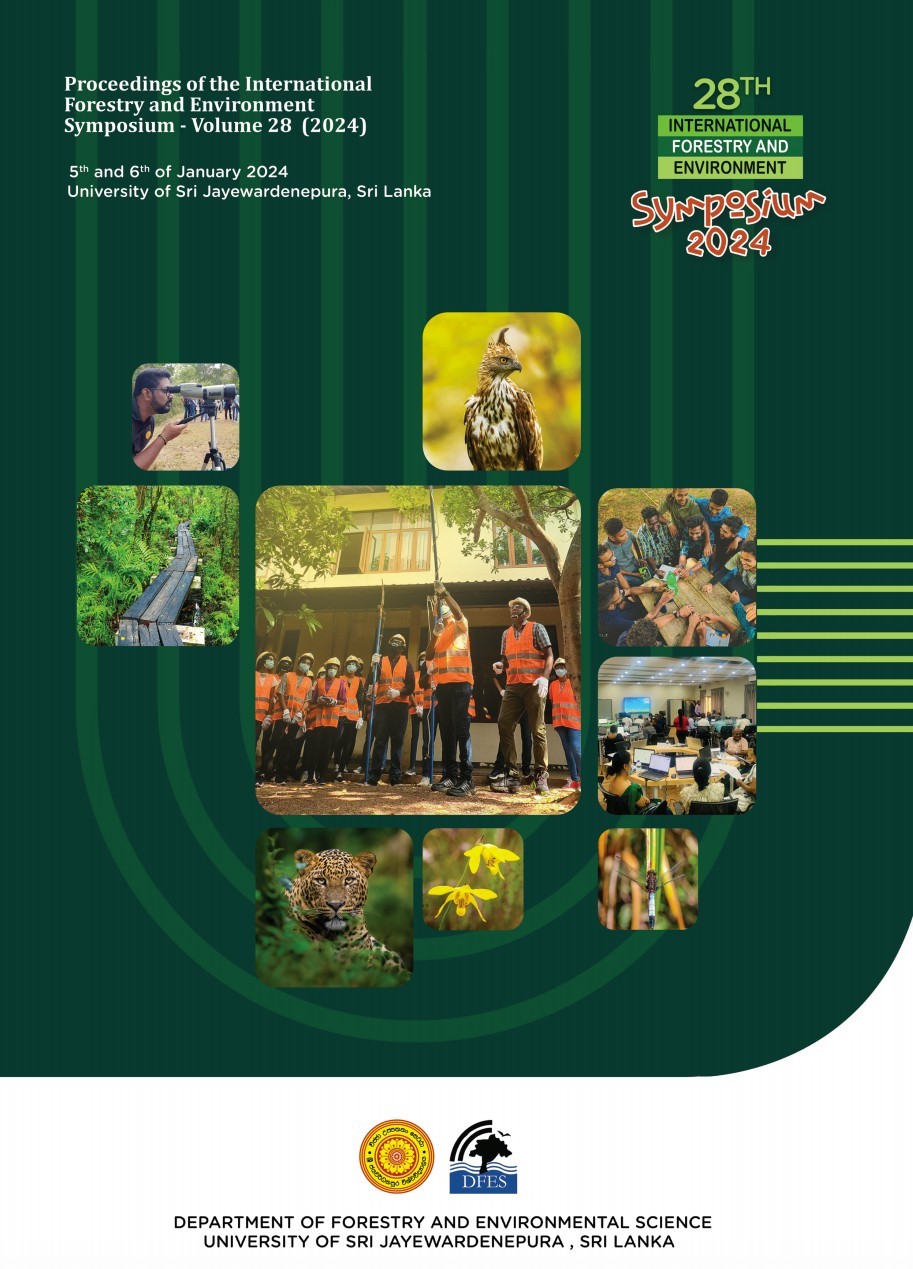Assessment of Urban Heat Island Effect Through Land Use Analysis and Surface Temperature Based on Satellite Imagery: A Case Study in Gampaha District
DOI:
https://doi.org/10.31357/fesympo.v28.6993Abstract
Rapid population growth and extensive development associated with urbanization exert notable influence on the environment and climate. Gampaha District, the second most populous district and administrative region, exemplifies such urban expansion. This study aims to scrutinize these dynamics, offering insights for future planning. The focus lies on assessing the urban heat island effect in Sri Lanka's Gampaha District through land use analysis using land surface temperature (LST). The approach involves generating land use and land cover maps for 2000 and 2021, alongside computing normalized difference vegetation index (NDVI), normalized difference built- up index (NDBI), and LST through satellite imagery. The relationships among these variables were analyzed. The findings unveiled an inverse relationship between NDVI and LST, while a direct association emerged between NDBI and LST. Regions with elevated LST, including Negombo, Katunayake Airport, Sapugaskanda Power Station, Biyagama, Yudaganavi Power Plant, Kadana, Kelaniya, and Wattala, were identified as heat spots. The extent of LST hotspots expanded by 4.84% in 2021 compared to 2000, primarily concentrated in the western sector of Gampaha District. In 2000, cold spots were primarily situated in the northern part of the district, yet by 2021, they had shifted to the southeastern region such as Alawala, Meethiriyala and Urapola. Built-up areas exhibited an average LST rise of 6.85% from 2000, with commercial and residential sectors experiencing a 1.69% increase. The narrative underscores that the population growth from 2000 to 2021 resulted in increased urbanization, reduced vegetation, and agricultural land loss being one of the contributing factors to these impacts. These findings highlight the necessity for strategic urban planning to counteract the heat island effect and its implications. Initiatives like advocating green spaces, enacting sustainable urban design, and fostering a resilient environment become imperative for Gampaha District.
Keywords: Gampaha district, LST, LULC change, NDBI, NDVI, Urban heat island



